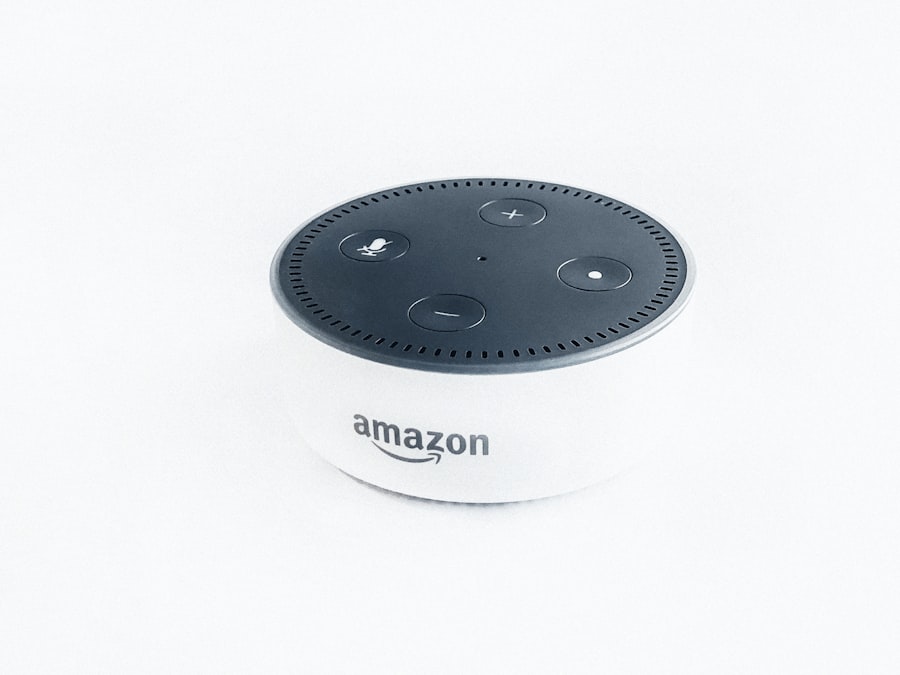Amazon, the e-commerce giant, has been at the forefront of the artificial intelligence (AI) revolution in the retail industry. Over the years, Amazon has invested heavily in AI technology to enhance its customer experience, personalize recommendations, improve supply chain management, and provide efficient customer service. This article will explore the various ways in which Amazon is leveraging AI to revolutionize the retail industry.
Since its inception in 1994, Amazon has been a pioneer in using technology to disrupt traditional retail models. In recent years, the company has made significant advancements in AI, with the goal of providing a seamless and personalized shopping experience for its customers. By harnessing the power of machine learning and data analytics, Amazon has been able to understand customer preferences and behavior on a granular level.
Key Takeaways
- Amazon’s AI revolution is transforming the retail industry.
- AI enhances customer experience by providing personalized recommendations and efficient customer service.
- Amazon’s AI-powered personalization strategy uses customer data to create tailored experiences.
- AI recommends products to customers based on their browsing and purchase history.
- Amazon’s chatbots and voice assistants provide efficient and effective customer service.
The Role of Artificial Intelligence in Enhancing Customer Experience
One of the key areas where AI has had a profound impact on Amazon’s business is in enhancing the customer experience. Through AI-powered algorithms, Amazon is able to analyze vast amounts of data to understand customer preferences and provide personalized recommendations. This not only helps customers discover new products that align with their interests but also improves their overall shopping experience.
For example, when a customer visits Amazon’s website or app, they are greeted with personalized product recommendations based on their browsing and purchase history. These recommendations are generated by AI algorithms that take into account factors such as previous purchases, product ratings, and similar customer profiles. This level of personalization not only saves customers time by presenting them with relevant options but also increases the likelihood of them finding products they love.
Amazon’s AI-Powered Personalization Strategy
Amazon’s personalization strategy goes beyond just recommending products. The company uses AI to personalize every aspect of the customer journey, from marketing emails to website layout. By analyzing customer data, Amazon is able to tailor its marketing messages to individual customers based on their preferences and behavior.
For example, if a customer has shown a preference for a particular brand or category of products, Amazon will send them targeted emails featuring promotions and new releases in that category. This level of personalization creates a sense of exclusivity and makes customers feel valued, ultimately leading to increased customer loyalty and satisfaction.
How Amazon’s AI Recommends Products to Customers
| Metrics | Description |
|---|---|
| Click-Through Rate (CTR) | The percentage of customers who click on recommended products |
| Conversion Rate | The percentage of customers who purchase recommended products |
| Customer Lifetime Value (CLV) | The total value a customer brings to Amazon over their lifetime |
| Return on Investment (ROI) | The ratio of revenue generated from recommended products to the cost of implementing the AI system |
| Accuracy | The percentage of recommended products that are relevant to the customer’s interests |
Amazon’s recommendation algorithm is one of the most sophisticated in the industry. It takes into account a wide range of factors, including purchase history, browsing behavior, product ratings, and even external data sources such as social media activity. By analyzing this data, the algorithm is able to generate highly accurate recommendations that align with each customer’s unique preferences.
Anecdote: One customer shared their experience of discovering a new favorite product through Amazon’s recommendations. They had been searching for a specific type of kitchen gadget but couldn’t find exactly what they were looking for. After browsing through Amazon’s recommendations, they stumbled upon a similar product that had excellent reviews. They decided to give it a try and were pleasantly surprised by how well it worked. This anecdote highlights the power of Amazon’s recommendation algorithm in helping customers discover products they may not have found otherwise.
AI-Enabled Customer Service: Amazon’s Chatbots and Voice Assistants
In addition to enhancing the shopping experience, Amazon has also leveraged AI to improve its customer service offerings. The company has developed chatbots and voice assistants that are powered by AI algorithms, allowing customers to get quick and accurate answers to their questions or issues.
For example, Amazon’s chatbot can assist customers with common inquiries such as tracking orders, processing returns, or finding product information. The chatbot uses natural language processing to understand customer queries and provide relevant responses in real-time. This not only saves customers time but also reduces the need for human intervention, resulting in faster and more efficient customer service.
The Importance of Data in Amazon’s AI Revolution

Data plays a crucial role in Amazon’s AI revolution. The company collects vast amounts of customer data, including purchase history, browsing behavior, and demographic information. This data is then analyzed using machine learning algorithms to gain insights into customer preferences and behavior.
By understanding customer preferences at a granular level, Amazon is able to provide highly personalized recommendations and marketing messages. This level of personalization not only improves the customer experience but also increases the likelihood of customers making a purchase. Additionally, the data collected by Amazon is used to train and improve its AI algorithms, ensuring that they continue to deliver accurate and relevant results.
Anecdote: One customer shared their surprise at how accurately Amazon’s AI predicted their needs. They had been browsing for a specific type of book but hadn’t made a purchase. A few days later, they received an email from Amazon with recommendations for books in that genre, including the exact book they had been considering. This anecdote highlights the power of data in enabling Amazon’s AI to anticipate customer needs and provide personalized recommendations.
Amazon’s AI-Driven Supply Chain Management
Another area where Amazon has leveraged AI is in its supply chain management. The company uses AI algorithms to optimize its logistics operations, ensuring that products are delivered to customers as quickly and efficiently as possible.
For example, Amazon uses predictive analytics to forecast demand and optimize inventory levels. By analyzing historical sales data, seasonal trends, and external factors such as weather patterns, Amazon is able to accurately predict demand for different products and adjust its inventory accordingly. This helps prevent stockouts and ensures that popular products are always available for customers to purchase.
Anecdote: One customer shared their experience of receiving their order faster than expected due to Amazon’s AI-powered logistics. They had placed an order for a product that was listed as having a longer delivery time. However, a few days later, they received a notification that their order had shipped and would be delivered sooner than originally estimated. This anecdote highlights the efficiency of Amazon’s AI-driven supply chain management in delivering a seamless and fast customer experience.
The Future of Amazon’s AI Revolution: Predictions and Expectations
As AI technology continues to evolve, it is expected that Amazon will further enhance its AI capabilities to provide even more personalized and convenient shopping experiences. Some predictions for the future of Amazon’s AI revolution include:
– Enhanced voice assistants: Amazon’s voice assistant, Alexa, has already gained popularity in households around the world. In the future, it is expected that Alexa will become even more intelligent and capable, allowing customers to interact with it in more natural and conversational ways.
– Augmented reality (AR) shopping: AR technology has the potential to revolutionize the way customers shop online. It is expected that Amazon will leverage AR to provide customers with immersive shopping experiences, allowing them to virtually try on clothes or visualize how furniture would look in their homes.
– Improved customer service: As AI technology advances, Amazon will likely continue to improve its chatbots and voice assistants to provide even more accurate and helpful customer service. This could include features such as real-time language translation or voice recognition for personalized interactions.
The Ethical Implications of Amazon’s AI-Powered Customer Experience
While Amazon’s AI revolution has undoubtedly improved the customer experience, it also raises ethical concerns. One of the main concerns is privacy and data usage. As Amazon collects vast amounts of customer data, there is a risk that this data could be misused or compromised.
Anecdote: One customer expressed their concern about privacy and data usage with Amazon’s AI. They were surprised to receive targeted marketing emails from Amazon featuring products they had recently searched for on other websites. This raised questions about how Amazon was able to access their browsing history and whether their data was being shared with third parties without their consent.
How Amazon’s AI Revolution is Shaping the Future of Retail
In conclusion, Amazon’s AI revolution is reshaping the retail industry by providing customers with personalized and convenient shopping experiences. Through AI-powered algorithms, Amazon is able to understand customer preferences and behavior, resulting in highly accurate recommendations and marketing messages. Additionally, AI is used to optimize supply chain management, ensuring that products are delivered to customers quickly and efficiently.
While there are ethical concerns surrounding Amazon’s use of AI, it is clear that the company’s AI revolution has had a positive impact on the retail industry. Customers appreciate the convenience and personalization that AI provides, and as technology continues to advance, it is expected that Amazon will further enhance its AI capabilities to provide even more seamless and tailored shopping experiences.
If you’re interested in the intersection of Amazon and AI, you might want to check out this fascinating article on AI-generated images. The article explores how artificial intelligence is being used to generate realistic images, and it discusses the potential implications for various industries, including e-commerce giants like Amazon. To learn more about this exciting development, click here: https://aitv.media/ai-image-generation/.
FAQs
What is Amazon?
Amazon is an American multinational technology company that focuses on e-commerce, cloud computing, digital streaming, and artificial intelligence.
What is AI?
AI stands for Artificial Intelligence. It is a branch of computer science that deals with the creation of intelligent machines that can perform tasks that typically require human intelligence, such as visual perception, speech recognition, decision-making, and language translation.
How is Amazon using AI?
Amazon is using AI in various ways, such as improving its recommendation system, enhancing its voice assistant Alexa, automating its warehouses, and developing new products and services.
What is Amazon’s recommendation system?
Amazon’s recommendation system is an AI-powered algorithm that suggests products to customers based on their browsing and purchase history, as well as other factors such as ratings, reviews, and popularity.
What is Alexa?
Alexa is Amazon’s voice assistant that uses AI to understand and respond to voice commands from users. It can perform various tasks such as playing music, setting alarms, answering questions, and controlling smart home devices.
How is Amazon using AI in its warehouses?
Amazon is using AI in its warehouses to automate various tasks such as sorting, packing, and shipping. It uses robots and machine learning algorithms to optimize the flow of goods and reduce the time and cost of fulfillment.
What new products and services is Amazon developing with AI?
Amazon is developing various new products and services with AI, such as Amazon Go (a cashierless convenience store), Amazon Prime Air (a drone delivery service), and Amazon Web Services (a cloud computing platform). It is also investing in AI research and development to improve its existing products and services.



